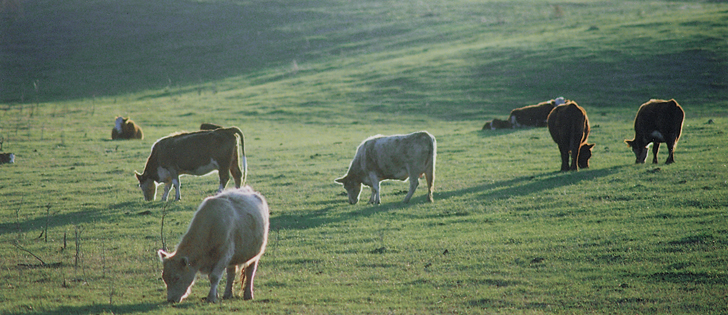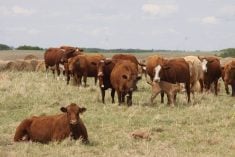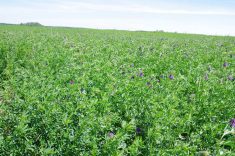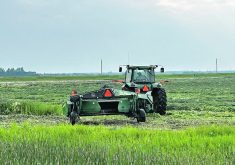Simple mix (7 species):
The resilience, longevity and adaptability of native forages make them an important grazing resource for prairie cattle producers.
Even so, the value of native versus tame forages can generate controversy, says Agriculture Canada grazing management specialist Alan Iwaasa.
It’s a controversy he avoids, but he has focused his research on letting Mother Nature do much of the work when it comes to forage production, and that involves a lot of native forages.
“It’s difficult to envision a selection of tame or introduced grasses that could provide the tolerance, the ability to adjust to changing environmental conditions, from one extreme to another,” he said during a recent webinar organized by the Beef Cattle Research Council.
Read Also

Beef check-off collection system aligns across the country
A single and aligned check-off collection system based on where producers live makes the system equal said Chad Ross, Saskatchewan Cattle Association chair.
“This is where we need forage species that can really be adapted to these sometimes extreme environmental conditions.”
Native forages can allow producers to extend the grazing season and let cattle do the harvesting and fertilizing. Properly managed, these forages can stand up to the pressure.
“Once you get them established, they can be there for a generation at a time,” said Iwaasa. “Native pastures can provide a really excellent forage resource and good animal performance and the animals can really do quite well on native pasture.”
Seed costs for native grasses are variable so Iwaasa advised producers to plan ahead to ensure they can obtain the desired varieties.
Successful stands will require a well-prepared land base with pre- and post-seeding weed control.
He has ongoing studies of native species in several different mixes. One involved a simple seed mix of seven species and another more complex mix had 12 native species that included cool and warm season types.
The latter mix allowed for good vegetative growth at different times in the grazing season, said Iwaasa, and allowed animals to select their feed to a greater degree. That can improve feed intake and weight gain.
He found no real differences between the simple and complex mixes in terms of total forage production.
Iwaasa cited previous work by renowned forage specialist Walter Willms, who said in his studies that tame grasses do not improve forage production on the northern mixed prairies.
As for grazing management, both native and tame varieties are vulnerable if grazed too early in the season.
Tame species can stand heavier grazing, said Iwaasa, because in many cases they’ve been bred for that ability.
As for the ideal varieties of native species, that will depend on producer circumstances, seed prices and availability. Given that feeding costs make up 60 to 65 percent of the total costs in cattle production, Iwaasa said attention to grazing longevity and quality is worth the effort and native forages can fit the bill.
Use native species for grazing
Agriculture Canada grazing specialist Alan Iwaasa has studied using both a simple and a complex mix of native species. These are the ones he used:
Simple mix (7 species):
- Western wheatgrass
- Northern wheatgrass
- Green needlegrass
- Awned wheatgrass
- June grass
- Slender wheatgrass
- Purple prairie clover
Complex mix (12 species):
- Western wheatgrass
- Northern wheatgrass
- Slender wheatgrass
- Green needlegrass
- Awned wheatgrass
- Purple prairie clover
- Canada wild rye
- June grass
- Little bluestem
- Needle and thread grass
- Blue grama grass
- Prairie sandreed
Source: Alan Iwaasa, Ag Canada


















